|
I was honored to be invited along with Dr. Niigaan Sinclair to be a part of the opening Plenary Panel: "Give it Back: Publishing and Native Sovereignty" at the Association of University Presses Conference this year which was supposed to be in Seattle, WA but much like all of 2020 ended up with me in my yoga pants sipping some iced tea out of my Prince mug while answering questions about the future of University publishing. Because we couldn't be there in person we were asked to record our speeches and when they sent me mine I grabbed it and am now uploading it here along with the transcript! My guiding principles for writing this speech were (1) let's make this world a better place through revolution, resistance and resurgence; (2) the world is ready for our voices, the voices of Black, Black Indigenous, Indigenous and People of Color. Last week the NY Times Bestseller list was full of books by Black authors. (3) There is always room to tell Andrew Jackson to go F himself. I mean it fits for every speech. Also, just for the true fans, Audra Simpson recently requested to my friend on Facebook. That's right she gets to see ALLLLL the photos of the puppy and memes about what it's like to be the mom of a teenage girl that are fit to print! I'm trying not to brag too much but here I am bragging. Video: Dr. Cutcha Risling Baldy Opening Plenary: Give It Back: Publishing and Native Sovereignty (June 15, 2020)The video may take a moment to load but don't give up! It works for the patient! This moment of ongoing resistance and revolution that we are experiencing reminds me that the work we have been doing in marginalized communities and the voices of Black, Black Indigenous, Indigenous and People of Color have been and will be the foundation for how we build decolonized futures. As we begin today I want to take a moment to say #BlackLivesMatter and encourage us all to work to center and uplift Black lives. We are in a moment of needed solidarity where real change can happen when we build coalitions. Decolonization demands of us to think of our intersectional lives as powerful and full of potential. And we need to remember this will only come from action. If you have not yet I highly encourage you to read #BlackInTheIvory And learn from the stories that are shared by Black Academics about what it is truly like to navigate higher education and academia. It’s very intimidating for me to think about who is potentially on the other end of this zoom meeting today. Editors? Are they real people? Do they also only dress professional from the waist up when they are filming Zoom plenary talks? (Cause I’m wearing pajama pants) To this day when I go to academic conferences and I spot someone who’s written a book that has stuck with me in some way I will usually whisper to myself “that’s so and so” and then proceed to silently follow them around so I can see what books they are looking at, who they are talking to, and what they order at coffee shops. Here are some authors I have stalked at Conferences: Audra Simpson; Michelle Jacob, Linda T. Smith, Robert Warrior, one time I literally dived out of the way to avoid Joanne Barker who I had been stalking but she abruptly turned around for some reason so I had to get OUT OF THE WAY. These are my Indigenous academic heroes. They showed me what was possible and they helped me to dream. One time I saw Jodi Byrd in line at the airport. I instinctively called out “Jodi Byrd!” And she turned around and looked all confused. Once I was renting a car and Joy Harjo was in front of me also renting a car and when she turned around I said “Joy Harjo!” And she looked and went “Oh, yeah, that’s me.” Then she waited for me to say something and all I could say was “poetry. You’re good at it.” The idea of being an author, or becoming an author felt like it would only happen to me if I got very lucky. This was the elite. And me, I was a regular person. Sometimes Editors or Assistants would come up to me at Press Booths and say “what are you working on?” And I’d be like “I’m working on getting my life together enough so I’m not sleeping on top of my laundry any more. Although by the way sleeping on top of clean towels can be VERY comfortable.” I would never say that I consider myself having enough hubris to be an author, especially an academic author. And let’s be honest, the industry itself doesn’t feel set up to help new authors or first generation authors, authors who may be marginalized by editorial decisions and boards. We aren’t mentored through this process, we are expected to take the hits and misses, but we aren’t invited in so much as thrown in. At first it also felt like a very dismissive process, having to sell myself and keep people's attention on subjects that really mattered to me. And - to be frank - I noticed a very big difference in how Editors and Staff treated me at conferences before I had a book, after the publication of my book, and then once my book won “Best First Book in Native American and Indigenous Studies.” When we start talking about the role that University presses have in shaping what people understand as academic work, or in shaping what is valued as “cutting-edge” research, we must also consider the responsibility that Presses should have toward nurturing our next generation of voices. Those who might not have thought about publishing, those who might think they can never be a part of that elite. Just the perception - the way that the most confident of voices are the ones we hear from the most, or who we invite to speak on subjects, or how we demand certain conventions in the way people present on their work. Presses also get reputations and generally those reputations are that they are “dismissive” or “elitist.” Maybe it’s a marketing thing. There were several presses I was considering and was then told by other people “oh you can try them, but they don’t publish Indigenous voices.” And when I looked into them further I noticed, they don’t publish Indigenous voices, they publish the voices of white academics who write about Indigenous peoples. I have been mulling over lately who we Center when we come to these spaces to share our hard fought, often liberatory, but also labor intensive knowledge. I live this work in my body. I read accounts in archives of Indian children hiding in trees and having to remain silent as they listen to the sounds of their family being killed. Those who hid amongst the reeds in rivers and were told not to come out until the river no longer ran red with blood. In 1850 they passed the Act for the Government and Protection of Indians and they started to enslave Native people in California. CA entered the union as a No Slave state - which we are so proud of. But we enslaved Native people. We sold them at courthouses under the guise of “apprenticeship.’ In Humboldt County, a review of these slave records reveals that most persons taken into slavery were children ages 7-12 and most of those were girls. So we should call it what it is - a sex slave industry. They were taking our girls, putting them into homes that didn’t care about them, putting their bodies, their futures up for sale. They were taking them, using them, disposing of them, and it hasn’t stopped. Indigenuos women and girls are still the most likely to be sexually assaulted, murdered, or go missing in the United States. I’ve become obsessed with the idea of finding out what would happen if I started mourning loss of land, loss of lives, loss of fish - if my grief was on display. As an academic I’ve internalized the message that somehow the work isn’t supposed to be deeply personal. Like I don’t carry the blood of my ancestors in my veins, blood that has run rivers red as we held on to the bodies of slaughtered children and wailed into the night sky asking ourselves “why” or “what are we supposed to do now?” Like we didn’t sing or dance for all those we lost. Like that song doesn’t come from me now. Like I don’t close my eyes and hug my daughter just a little bit tighter at night because there was a time when they would have ripped her from my arms and sold her. And I would never stop looking for her. I would do anything to find her again. Like my ancestors didn’t search until they couldn’t search any longer. Like we don’t continue to search, or grieve even now. And we live here in this space that they stole from us. This place where we buried our beloved. Where we sing and dance and laugh and love. This place where we cried tears of joy and sadness and from laughing so hard our stomachs hurt and from hurting so hard we thought we’d never laugh again. I can’t wear my grief like that – because it scares people and they go “oh, well she’s emotional” or “oh well, she’s biased” or “oh, she just wants to make white people feel bad about themselves.” Sometimes this work can start to feel like it is only about our death. Our deaths, not our lives, not our futures, not our present struggles against a settler colonial systems that refuse to imagine our futures as sovereign nations, but instead focus on the violence enacted on our bodies. Making spectacle of our deaths is the practice of genocide. Denial was a practice of history. And we must be careful and mindful not to become merely spectacle again. We can tell a story about Native peoples that begins and ends with genocide. This has been where many choose to start and stop. But we are not a people born in genocide, we are a people who are born through world renewal. There may have been groups of settlers who thought they could stamp out that power, our power, which just shows the hubris of settler colonialism. But it also shows the fear. The fear of our stories. The fear of our continued relationships to land, to fish, to water, to decolonized futures. We are older than settler colonialism, our memories, our epigenetic markers, our DNA knows before settler colonialism and it will know after settler colonialism. It will be here in the next world. For me, our history is not the history of the attempted or ongoing genocide of us. It is a history of survival, resistance, resurgence and re-Indigenization. This is why my work centers our resurgence, our revitalization. Yes, it is important to understand the many nuances of this attempted genocide, but I also want to talk about us in complex ways that acknowledges we are more than what settlers wrote about us in archives, more than the documentation of our death. When we worked in our community to revitalize our women’s coming of age ceremony, we found parts. We heard stories about ancestors who said “I can’t remember everything, but I can remember this. A song. A prayer. A story. I will carry that forward for the next generation.” They planned for us. They knew we would be here. They were not dying, sad, vanishing Indians, they were going to survive and they would remember, so that we could dance and sing and laugh and love. Yet these are not the stories we read on best seller lists. I don’t want my work or research on genocide to Center our deaths. To make spectacle of this catastrophe. They use words in these books like “labor” instead of “slavery” or “forced prostitution” instead of rape. Like we should believe this story is about a play on words. Defining and redefining us without us. See what happens is that there is still an assumption that our peoples histories, stories, research etc. are biased or at the very least “overly emotional.” Sometimes I also get “utopic.” I’ll come in to spaces and say “prior to colonization there was no rape. Also everyone had a house and enough food to eat.” And then someone will say “she’s biased. And she thinks Indians are the best. And this is a utopic vision of the past.” To which reply “Of course I’m biased, so is ---insert white historian here---. And a culture and society with no rape is not a utopia, at least it shouldn’t be, it’s just a good idea.” I think now, in this moment we are witnessing, we have seen how the world was shaped by white fragility and white comfort. The books that people centered were written to help maintain a white comfort with how we understand this world. And it was Black and Indigenous feminists, philosophers, and activists who were doing the real work of envisioning worlds without state violence, moving us forward so that we can all breathe. Now it’s time for you all to start thinking “what do we want our futures to look like? What role do we play as university presses in making that world?” Take a good, long, look at your list. Where are your Black, Black Indigenous, People of Color voices? What kinds of stories are they telling about us? And then do these five things: 1. Stop publishing books about Andrew Jackson. Unless the title of the book is Fuck Andrew Jackson. Then maybe. But ask yourself do we really need another book about Andrew Jackson? (This can also be applied to the following - General Ulysses S. Grant, Thomas Jefferson, Benjamin Franklin, really any dude that signed the Constitution.) 2. Create Indigenous editorial series with supportive Editors that know Indigenous studies. I published my book with the University of Washington Press because of the Indigenous Confluences Series led by Coll Thrush and Charlotte Cote. 3. If you’ve already published a book about the California Indian Genocide (but haven’t published a book about California Indian fights for water, salmon, land return, language revitalization or cultural resurgence) then you don’t get to publish any more books about the California Indian Genocide until you do. 4. This is the same for “Indian Wars” or “Early Colonial Relationships.” 5. And finally, #5: Stop centering white audiences. Think about how you can make books for marginalized communities and audiences. Remember that they also need representation and that their voices have been and will become some of the most needed in times like this- revolution, resistance and resurgence. In my own community, after my book was published, I would have young people come up to me and say “I bought your book, I’m going to read it.” I would usually respond “well, it sometimes has really big words in it like I have to say epistemology a lot so that it can be an academic book.”
And this girl, in the 8th grade, said to me “don’t worry, I have a dictionary.” In our area, people don’t really hear about us in the news unless we are being reported on for crime - on the 10 most wanted list, drugs, alcohol. This is the story our media usually tells about our tribes in this region. “But” this girl said to me “people buy your book. Someone made your book and put it in stores. That means they want to know about Hoopa. They want to know about us.” Now, young people have told me they are writing, they are going to write the stories. They said “you have a book, maybe I can have a book.” And I say “You can write a book. You can get a book published. I’ll make sure of it.”
0 Comments
Y’all, it’s been less than two months (57-58 days), depending on when you skim/read this, since the City of Eureka returned Tuluwat to the Wiyot Tribe. Less than a week (3-4 days) since Native American Heritage Month. Less than 20 minutes since I got an email from someone wanting me to come and speak at their event and teach them about California history and cultural revitalization. Less than thirty seconds since I grabbed a trail mix from my pantry and hunkered down in front of this computer and started reading about all this Humboldt Wind, LLC (Terra Gen) settler nonsense. What the WHAT? Look in case you didn’t know (or you don’t live in Humboldt County, or you live in Humboldt County but you don’t get the news or you get the news but you don’t really remember it because lately there is TOO MUCH NEWS) let me sum up: Humboldt Wind, LLC (Terra Gen - who in all the documents people are always referring to as “the applicant”) wants to build a 47 wind turbine monstrosity on Tsakiyuit (Bear River Ridge) and Monument Ridge near Rio Dell and Scotia. This is a sacred place for Wiyot peoples and contains several culturally significant resources and archeological sites. The Wiyot Tribe opposes the project because it would destroy these sites and resources. There are other concerns that have been expressed by community members that include “hey, nobody wants to destroy a Wiyot sacred site” and also “we don’t want to kill a bunch of animals or destroy a bunch of plants.” Apparently the location site is “so close to an important bat migration hotspot. Every fall, thousands of hoary bats descend upon Humboldt Redwoods State Park, exhibiting a “swarming” behavior that appears to be unique to this region.” Humboldt Wind, LLC/Terra Gen (“the applicant”) believes that “The Project’s benefits outweigh the significant unavoidable impacts” because the wind farm will be “sufficient to power 70,000 households” and “would displace emissions of approximately 384,068 metric tons per year of carbon dioxide.” Also there’s gonna be a lot of money saved (through local grid improvements) and a lot of tax revenue (for over 30 years) and science. No really, I read the appeal letter. It basically ends with a paragraph that’s like “and science! Science, science, hoary bats, science. This is science. Science is science and science. Do it for SCIENCE.” I’m going to post here the entirety of “the applicants” “Benefits to Knowledge Base.” explanation that was included in the appeal: The formation and operation of a Technical Advisory Committee would allow the scientific community to study specific populations of bats known to occur in the region, including the hoary bat, and understand population trends in general, as well as the impacts of the Project on the population. A similar level of scientific knowledge would be provided for avian species. This will contribute to the greater scientific knowledge base and support future environmental analyses and mitigations. This is basically saying “everytime one of these goddamn Hoary bats flies in to one of these things and dies they will let the scientists study it and then we can learn more. Same for all the dead birds! YOU’RE WELCOME SCIENCE.” Look, the Wiyot Tribe (as well as several environmental groups, community organizations and other community members, oh and the city of Rio Dell) oppose this project. So I feel like that’s it right? We’re done here. Cool. We’ll go find a better project. Except. Nah. Now “the applicant” is appealing to the Board of Supervisors of Humboldt County to approve the project even though the Planning Commission voted to not approve the project. Which brings us here. My open letter to the Board of Supervisors about the proposed wind turbine project on Tsakiyuit (Bear River Ridge) and Monument Ridge near Rio Dell and Scotia. Dear Board of Supervisors: What the WHAT? Is this where we are, really? I’m supposed to come before you and so humbly explain why building a giant frigging wind farm in the middle of a sacred site for Wiyot people is a bad idea? Why it’s spitting in the face of relationships with Indigenous peoples in Humboldt County? Why it’s outdated and short sighted and also why it basically is a giant fuck you to everyone in this county who is doing the hard work of actual reconciliation and collaboration with tribes? Also have you read this appeal letter, it’s bananas. It’s a joke. I look forward to staged dramatic readings of it with Patrick Stewart in his best Hamlet’s Ghost Dad voice. ATTENTION PEASANTS! Humboldt Wind, LLC hereby appeals the November 21, 2019 decision of the Planning Commission of the County of Humboldt to deny its application for a Conditional Use Permit and Special Permit for a wind energy project (the “project). TO BE OR NOT TO BE! Lately, when I try to use my oh so measured approach with people, reasonable people, about why we can’t (shant?) build a giant wind turbine installation on a sacred site inevitably they look at me and they go “Cutcha do you just want us all to die?! We are in a climate crisis! We have to do something! WIND OR DIE!” I get it. We are in a crisis. There’s not enough rain, the fish are endangered, the dams are failing, and we’re starting to see massive storms, erosion, an increase in temperature, oh and the whole thing is on fire. This dumpster fire is a literal fire. So yes, we are in a crisis. And the writing is on the wall. All that stuff that settlers did when they came rushing in to California had lasting consequences for future generations (that’s us, we are the future generations). They blew up mountains and pushed tons of dirt into the rivers and willy nilly cut off streams because they wanted gold. They HAD to have it. It was gold or die! Everybody needed the gold. Capitalism! Money! It was good for the county! If everyone was making money then they’d pay more taxes! Imagine their appeal letter: Sorry we blew up that mountain, we understand there are “significant unavoidable impacts” on the environment and people but you know… it’s just tribes. At some point, there was also some guy who went you know what’d be dope. Pouring a bunch of mercury into the water so we can get at flecks of gold. Chisa Oros writes in her amaze-balls thesis that: sediment gathered was treated with methylmercury, also called mercury or quicksilver, in order to gather the gold bits and separate the lucrative product from other minerals the miners did not have interest in. The mercury, a highly toxic metal, was washed away or discarded on the banks of rivers or outside the mines in large pits (10). So yeah, miners and mining companies at one point had to realize “oh, we’ve poisoned the water and fish. That sucks, those are some “significant unavoidable impacts” that we will mitigate later.” (As far as I know they didn’t go “but now you can study all the dead fish! And we’ve created an opportunity for ongoing studies of the impact of mercury in water to the fish for the next 10,000 years! You’re welcome science!) Eventually there was company (applicant?) who went “we should cut down all the trees! WEEEEEE. Oops, now all the soil is eroding and everything sucks, also oxygen. Unavoidable impacts are tough.” Then came the companies who were all “you know what would be a good idea, building a bunch of giant dams to make electricity” and then all the fish started dying and everyone was like “oops, sorry, that actually does affect the ecosystem and stuff. Who knew that long term having these dams would cause so much damage that we would be endangering species in the river and the ocean. Orcas are starving because salmon are dying. The water is warming. But we have electricity! Also now you can study the starving Orcas more closely because they can’t swim away because they are starving. You’re welcome science!” This problem is not a new problem, it is a settler colonialism problem, it is a problem where we continue to repeat the same tired arguments (“it’s better for the economy” “we need energy now” “it’s just ONE sacred site” “I mean it’s just Indians…”) and then expect different results. You’re not going to save the world by denying the sacredness of her. We are in a crisis. A crisis that was made, founded, built, and upheld by settler colonial arrogance, greed, and willful ignorance. You don’t get to have that excuse any more. Not when despite hundreds of years of attempted destruction of our ways of life, of massacres and murders, of assimilation, removal, and termination, we are still here. We will still come to your meetings and stand in front of your boards and say to you “This is sacred. We know this to be true. We are telling you this is not the way.” And we carry on our sacred relationship to these lands and we are still willing and able to protect and fight for the relationship because we know, we absolutely know, that we will not solve this problem through “mitigation” and “unavoidable impacts” we will solve it with relationship, reciprocity and respect. Know this: Indigenous peoples are 4% of the world’s population, live on 22% of the earth’s surface -- an on that land is 80% of the planets remaining biodiversity. (Sacred Land Trust) Our knowledge of place is thousands of years old. Our ability to manage in a way that centers land, life, and futures is what will solve this problem. We are not coming to the table just to be heard, we are coming to the table because we know something has to be done. We’ve been doing it. We’ve been doing it despite all the ways that law, policy, the state, the federal government, and companies have tried to keep us from building, re-building and centering this relationship. Now that it’s becoming obvious how important Indigenous scientific environmental knowledges are, it’s your turn Humboldt County, it’s your turn to sit back, listen, and build something better, something that is actually going to solve this crisis. Our sacred sites are not designated lightly. The power of these parts of the earth, the movement and monument that are these places, this thousands of years of knowledge and relationship is not built, maintained, or severed lightly. This is not an easy thing to do, to build a sacred relationship. And I would say that the Wiyot saying no to this project is also not done lightly. It is not done with flippancy. It is not done with malice. This is about reverence. A reverence that reverberates through time. A revereance that exists to this day despite genocide, removal, relocation, and termination. Continuing to participate in the ongoing attempts to sever this relationship between Wiyot peoples and their sacred places is the continued willful ignorance, it is carrying on a legacy of genocide, a legacy of destruction. As we sit in our big fancy chairs and read the reports, listen to the testimonies, move through the appeal letter (try not to laugh at the part where they are like “there’s gonna be SO MUCH SUB DIVIDING IF YOU DON’T DO THIS YA HEAR ME! SUB DIVIDING!”) we need to remember that we are at a precipice of history and the future, standing somewhere in between, where we can either build something meaningful and new or repeat and uphold a system that caused this problem in the first place. We are in a crisis. This crisis will continue if we cannot re-build our relationship to these lands, these more-than-human relatives, these fish, flora and fauna, in real ways. It's just a no. We have to find a better project. If you’d like to come and show support for the Wiyot there is an upcoming important public meeting with the Board of Supervisors on December 16 beginning at 9 a.m. at the Adorni Center. As I’ve been told by people smarter than me: “People gotta show up. They gotta speak and use their two minutes.” More articles if you want to read more about the issue:
https://lostcoastoutpost.com/2019/may/16/op-ed-wiyot-tribe-urges-people-cast-wary-eye-ridge/ https://lostcoastoutpost.com/2019/nov/7/op-ed-terra-gen-wind-power-project-will-chain-us-c/ https://lostcoastoutpost.com/2019/nov/13/city-rio-dell-opposes-humboldt-wind-energy-project/ https://www.northcoastjournal.com/humboldt/protect-tsakiyuwit-deny-terra-gens-wind-farm/Content?oid=15732520 Also here is a link to the Humboldt Wind site that contains the Draft and Final EIR. https://humboldtgov.org/2408/Humboldt-Wind-Energy-Project  The sign went up this week “Coming Soon- Dollar General!” Well, wait – the fence went up first. They put a big fence around this empty lot almost as if to say “we must protect the Dollar General.” It’s not a very tall fence. I guess I need to start with – I am against Dollar General being built in Mckinleyville (the town where I live) right across the street from the local high school (where a number of Native students go to school) and on a corner that is very near a number of neighborhoods and other schools. Not just because it’s not a very bright vision of the future we might want for our community. It’s not open green space, a public garden, a skate park, an artist installation and gathering place – it’s a freaking Dollar General. But also because Dollar General is a company that spent the better part of the past few years single handedly trying to challenge Native tribal sovereignty and prevent us from being able to civilly prosecute non-Native offenders for sexually assaulting our children. That’s right, they spent the better part of the past few years spending all kinds of money to protect a child abuser. They decided it was much more important to take away Native tribes ability to protect their children (through civil court) than to pay restitution to a Native child who experienced multiple instances of sexual assault from a Dollar General Manager. Fuck Dollar General. To explain this I’ll need to go all the way back in the 1800s. That’s right – it’s time for a quick down and dirty Federal Indian law lesson. It will bring us all the way back to the present and me standing on the corner of the street I grew up on wondering HOW our County Supervisors allowed for a corporation like this to get it’s grubby little hands on land that is across the street from our high school kids. And why they didn’t even THINK that what Dollar General had done was egregious enough to make sure they were not allowed in our community. Native people (Native women, Native kids) are treated as sacrificial, we are not enough of a concern to warrant a quick google search and a “oh, maybe we don’t want corporations here that protect child abusers and treat Native tribes like they are savage.” *Note. This is not a comprehensive look at Federal Indian Law that goes through all of the convoluted steps that have been taken to chip away at Native tribal sovereignty and our ability to protect our Native peoples from violence and assault. Also I’m not a lawyer. I’ve never claimed to be a lawyer. I once thought about being a lawyer and then I worked as an assistant for a bunch of lawyers who all took me out to lunch one day and said “NEVER NEVER BE A LAWYER. EVER.” Lawyers are hilarious.* Dollar General Corp. v. Mississippi Band of Choctaw Indians (2016) It was 2003 …a 13-year-old Choctaw boy went to work at a Dollar General store on the reservation as a part of his tribe’s Youth Opportunity Program, where an employer gets free labor in exchange for giving Choctaw youths work experience. The U.S. Attorney’s Office, which has to handle criminal cases for Tribes (especially, in this case, because it was a non-Native offender) declined to prosecute the case (this tends to happen a lot. Most of the time they decline to prosecute. “It’s expensive.” “It’s just one case…” etc. etc.) Native tribes cannot prosecute non-Native offenders who commit violent crimes (like sexual assault) against Native people on Native lands. Just let that sit for a moment. We cannot prosecute people who come to our lands and assault our people. The case was left with a “too bad, so sad.” So the boy’s family tried to seek justice through tribal court asking for a civil judgement against the manager and Dollar General. Dollar General refused and they sued saying they didn’t wanna go before the tribal court because the tribal court will be mean to them because tribal peoples will just be mean to non-native peoples wah! (I paraphrase) Here are some things to keep in mind:
But How Did We Get Here? Wait a minute. A non-Native person can commit a crime against a Native person on Native land and not answer for it? They can get away with it? How is that? What? Is? That? Yup. And it happens a lot (both the committing of violence and the getting away with it). See all the way back in 1883 a man by the name of Crow Dog came before the Supreme Court in a case called Ex Parte Crow Dog. Crow Dog killed another Native man named Spotted Tail. The tribal council decided that Crow Dog, in line with his tribal traditions, would pay restitution to Spotted Tail’s family. However, the U.S. said that was wrong and that the tribe SHOULD have hung Crow Dog. (Interesting that what they really wanted was two dead Indians and not just one). Crow Dog was found guilty in U.S. court and was sentenced to hang. He decided to take his case all the way to the Supreme Court where the Supreme Court at the time said “nope. You can’t hang him. Tribes are the ones who have jurisdiction over these crimes on their land. They are frigging sovereign nations.” At the same time though the court was like “But, if Congress wanted to pass a law that said Indians no longer could be in charge of this kind of stuff Congress could do that because Congress has plenary power over Native tribes so…” Guess what happened two years later? The Major Crimes Act (1885). This is where Congress was like “Indian tribes are so savage and they don’t know that you’re supposed to hang people for everything. So we are going to pass a law that says Native American Tribes CANNOT prosecute crimes that are major.” Indian tribes could no longer prosecute any cases that involved: murder, manslaughter, rape, assault with intent to kill, arson, burglary and larceny. Later they updated this list to include: kidnapping, maiming, sexual abuse, incest, assault against a minor, felony child abuse or neglect and robbery. Who is supposed to try these “major crimes” when they are committed against Native people on Native land? The U.S. Attorney’s Office (someone is gonna want me to get into Public Law 280 and how messed up that is but I don’t have time for that so just know that there are some states where it is not the U.S. Attorney but rather local governments that are supposed to prosecute major crimes). Often the U.S. Attorney’s office will decline to prosecute major crimes that are committed against Native people. There are many documented statistics about the fact that cases are often declined, never investigated or “lost” to the system that asks outside agencies to come in and prosecute Individual cases on rural reservations. Finding numbers about the total amount of cases that are “declined” by federal prosecutors is difficult. NPRs ongoing work about how this specifically affects the prosecution of rape cases against Native women demonstrates that this is an ongoing problem: If cases are declined, Richter said, it's because many rapes are inherently difficult to try, and federal courts place a high burden on prosecutors for evidence. So Native tribes cannot prosecute. U.S. agencies decline to prosecute. And the offender can go about their business after having assaulted and violated a Native person. It’s a legal loophole that has existed since 1885. And people know it’s a problem. They KNOW there are statistics to support it. Yet, we still get cases like Dollar General where they come in and want to take away our rights to find justice through civil cases. Why do they hate Tribal Courts so much In 1978 the Supreme Court issued a decision in a case called Oliphant v Suquamish. This dude Mark David Oliphant was a non-Indian living on Suquamish Tribal land. And then he assaulted a police officer and resisted arrest. The county and the BIA didn’t send anyone to arrest him so he was arrested by tribal officers. Oliphant took it all the way to the Supreme Court saying that he couldn’t be arrested by Indians because he didn’t WANNA BE! And the Supreme Court went “yep, you’re right. Tribes can’t arrest or prosecute non-Native offenders when they commit crimes on their land.” This means if you are a non-native who commits a crime on Indian land a tribal police officer can’t arrest you and a tribal court can’t prosecute you so basically, cool, just go ahead and be a dick cause ain’t nobody gonna do nothing about it. The idea from the Supreme Court was that Indian tribes are not real sovereigns (domestic-dependent) and also even if they are you shouldn’t have to be subjected to another sovereigns “customs and procedures.” And then- get this, the Supreme Court is like (not a direct quote but you’ll get the gist) “you know, like Crow Dog. We said that if you’re an Indian you shouldn’t have to be subjected to another sovereign’s customs and procedures so it’s the same for non-Indians too!” EXCEPT THEY ALREADY DID. MAJOR CRIMES ACT ANYBODY? Also – tell that to France. You can go visit and go up the Eifel Tower and then pee down the front of it and when they come to arrest you be like “Look, I’m from the U.S. And we should haven’t to be subjected to your customs and procedures!” See how that works. At the end of the Oliphant decision the court “invited” Congress to fix this problem acknowledging that there was a very high crime rate against Native people and that this would likely create a further issue. But Congress was like “meh… it happens.” They must have done something by now right? Kinda. Montana v. United States (1981) said that tribes can exercise civil jurisdiction over nonmembers if: (1) the nonmembers have entered "consensual relationships with the tribe or its members, through commercial dealing, contracts, leases, or other arrangements" or (2) the nonmember's "conduct threatens or has some direct effect on the political integrity, the economic security, or the health or welfare of the tribe." This means that tribes can at the very least oversee matters of restitution through civil court. If there is no other justice we can hope for, there is AT LEAST that. In 2010 the renewal of the Violence Against Women Act included provisions to extend the ability of Native tribes to arrest and prosecute non-Native offenders. In 2010 Obama also passed the Tribal Law and Order Act which expands the abilities of tribal courts to prosecute violent offenders but limits sentencing: not greater than 3 years, fines are limited to $15,000, and jurisdiction is limited in scope. There are new cases of tribes who have been able to establish the capacity to prosecute violent crimes (under this limited scope) but this has just begun. Some legal experts are saying that it is likely these cases will end up in the Supreme Court again – to test the strength of the Tribal Law and Order Act. So What about Dollar General? What I’m always telling people when I go do talks about these ongoing issues of legal loopholes to commit violence against our people is that these cases matter not just because of the precedent they set, not just because of the statistics but also because we are people. And any person who is assaulted and violated should have justice. Because they matter. This Choctaw boy, every child, every person faced with the long lasting trauma of these crimes – they need to know that we value them – that we will fight for them and that we will not allow a company like Dollar General to have the last say in what justice looks like. The Humboldt County Board of Supervisors and Planning Department that approved Dollar General being built in our community, a community with 12 local area tribes, a community that has a significant number of tribal peoples living in it, a community that supposedly values our tribal peoples knowledge and voices – should be ashamed of themselves. They should be ashamed that they supported and approved of a company who made it their goal to attack Native sovereignty and to devalue a 13-year old boy who had to spend YEARS after his assaults testifying and worrying about the outcome of this case. We are people. Our children are at risk. Our people experience some of the highest rates of violence. Our communities are part of your community – Humboldt County. And you are willing to ignore that this corporation, one that would rather protect their business and money interests than actually work as part of a community to protect children, is coming in to our community. It is telling that once again our children are the ones who are sacrificed in the name of cheap and easy shopping for cheap and easy food (or sponges or toys etc). The outcome of the Dollar General case is that they lost. They frigging lost. But they only lost because Scalia died. The decision came back 4-4 and Scalia’s history had always been to vote against Native tribal sovereignty. Because the decision was tied the lower court ruling was upheld and that ruling said that tribes should be able to civilly prosecute non-Native offenders (when they agree to be prosecuted by the tribe in their lease and contracts). Dollar General spent all that money and all that time to denigrate Native tribal sovereignty, to imply that we would be unfair, to imply that we were primitive, savage and that “all Native juries” or a “Native judge” would somehow be unable to serve. Yet, as pointed out by Justice Sotamayor, they wouldn’t say the same thing about an all-white jury or a white judge. Dollar General spent all that time and money to keep a Native boy from seeking justice. That’s who Dollar General is. That’s what they bring into communities. That’s what is being ignored when they are allowed to put up their “coming soon” sign. Fuck Dollar General. I care and I don't want Dollar General!What do we do now? We are working on it. Hoping that people will step up and start to make a big stink about this. Some people say to me "But they're already building, they are already breaking ground so... too late." Nah - it's not. So let's make it obvious that we are actually a community and we want our community to be better than frigging Dollar General. First - SHARE THIS BLOG! Let everyone know about Dollar General and their practices. 1. You can message District 5 County Supervisor Ryan Sundberg. Contact info: Ryan Sundberg (5th District) 825 5th Street, Room 111 Eureka, CA 95501 Direct line: (707) 476-2395 [email protected] 2. You can message soon to be District 5 Supervisor Steve Madrone and tell him that he needs to be out there stopping Dollar General. Try the Facebook page here: https://www.facebook.com/madrone4supervisor/ 3. You can write a letter to the North Coast Journal or the Times Standard, 4. You can show up outside of where they are building the Dollar General with a sign that says "NO DOLLAR GENERAL." 5. You can go to the next County Supervisors Meeting. September 25, 2018 at 9:00 a.m. humboldtgov.org/Calendar.aspx?EID=3750 6. If you are a member of a tribe (especially local tribes) you can encourage your Tribal Chairs and Tribal Council to write letters to the supervisors, come to the supervisors meeting and generally make a big old stink about all of this. 7. You can comment on this post and I will post them and put them on posters and send them to the Supervisors myself. I am so fortunate to be surrounding by some powerful Native people. We have been talking about this. We will be looking at what we need to do next. I thank them for reaching out to me and inspiring me to begin here. #NoDollarGeneralMckinleyville Will add more soon. Don't Be Afraid to Sing Out or How I Became a Singer or My Book Is Coming Out In Two Months3/8/2018 I realize it has been a good long while since I've sat down and written a blog entry but it is for good reason. And that reason is I haven't felt like it. No but really. I've been doing all the things you all should have been doing over the past few months: I went and saw Black Panther. I bought Heart Berries by Terese Mailhot. Went to some symposiums. Presented at some conferences. Oh, and I've finalized everything for the book which is coming out in JUST A FEW MONTHS (as in two months. TWO MONTHS). I've learned a lot along the way. Because being an Indian is lived research and critical thinking. Our traditions teach us to be thinkers by showing us that there are no easy answers and that through sustained exploration we can continually learn and sometimes change our findings, based on our lived experiences, on our relationality to the world around us, on our dreams, on our families, on ourselves. This is part of the reason why the static nature of research feels so counter intuitive. All the so-called objectivity and positivism, all the times we have been told that our feelings weren’t the same as the statistics. All the times that we have been confronted with these statistics as if they are more important than our voices and our stories. And now, as we continue to build Native studies, decolonization theory and praxis, Native feminisms, and Indigenous futurisms, we are able to build approaches to education that value survivance, sovereignty and story. In the contemporary context, stories have the power to (re)claim sovereignty, landscapes, cultures and knowledge. And what is research, what is education, but exploring the world through stories? So this is a story... about how I became a singer. I didn’t know growing up that every time my Grandmother would interrupt me while I was trying to watch TV after school that she was teaching me. Most of her stories didn’t have endings and she would often start in the middle of a thought. The things I remember from my very young childhood that she taught me were (1) don’t act like a white girl. White girls are spoiled and they don’t respect their parents. And they won’t get dirty. (2) If someone comes at you like they think they are hot shit, go get your cousin. That’s what cousins are for. (3) You will eat water fried potatoes and soggy bacon and you will like it. Also, malt-o-meal is a MEAL. It has the word right in there. As I got older she taught me much more like – wear shoes that actually fit you. If you can’t climb up the mountain, crawl up the mountain. And never let a man hit you. And if he hits you, you leave and you never look back. She died of kidney failure when I was at Stanford. Diabetes. She told me once that dying of kidney failure because of diabetes was a very Indian thing of her to do and that she hoped I would put that in my book some day. Before, when she was sick, my Mom made me go to the hospital to sit with her and talk about her life. I said “Grandma, mom wants me to ask you questions about your life.” And she said “Because I’m dying? That sounds like a fun way to spend a Saturday.” There was a lot she told me – more education – more stories. One thing she said “do you know why it’s important to sing? You had a pretty voice growing up, but now you don’t sing. Not in ceremony, not in public, not in front of people. Girls are taught this now, they don’t sing out. Back in my day, girls, they would sing out. I taught my girls to sing out. All Hupa girls used to sing out. We could shake mountains. And the men would just dance away to our songs. But now so many of you girls are taught to fade into the background. And you try to. So you don’t sing. Because you think that’s what girls are, background.” And she ended with, “don’t be afraid to sing out.” Many years later I was living in San Diego and I was in an abusive relationship. All those strong women in my life, all those stories, all that Indian education, and there I was pinned up against a wall with his finger in my face telling me that I was worthless. He said, “Cutcha, nobody else will ever want you.” He said, “Cutcha, nobody else will ever love you.” And one night after a particularly violent incident I was on the floor of our bathroom. I didn’t know how I was going to get off the bathroom floor. I didn’t know how I was going to leave. But I knew a song. And I heard my grandmother say to me, from somewhere far away (we say across the river) “don’t be afraid to sing out.” So I sang to myself, and I got up. Months later I would finally attend our revitalized women's coming-of-age ceremony, as a dancer. I hadn't planned on singing. My Auntie pulled me aside and said "I'm going to teach you a song. It's your Great Grandfather's song. It's pretty easy. When the time comes I'm going to call you out and tell you to sing it." "But I don't..." "You'll start. We will join in." I stood at the top of the house that night and tried to hide in the shadows. The time came. Auntie said "Cutcha's going to sing." And so I began... Page from the book!As I have readied for the release of the book I have been going through many files, photos and other things I've collected along the way. This includes a set of songs which were recorded by me with my cousin Viola "Chummy" Brooks and my (at the time) 6 year old daughter (who is now 10). Along with these recordings I have been reviewing the recordings that were collected in the 1970s as people were trying to document this dance that our communities had not been doing publicly for quite some time. There are even recordings of elders who were working with ethnographers in the earlier/mid 1900s where they expressed hope that one day someone would sing their song again. It is amazing to think about these recordings as moments in time where elders shared the songs they could remember, songs that had been passed down through their families, songs they recorded in the hopes that one day people would sing them again. And now we do. We not only sing those songs, we sing our own songs, songs that have come to us and stayed with us. Songs that remind us to laugh, to pray, to love and to sing out. Going through these recordings I am struck by the way they all document a moment in time. Like how my own little girl is singing her Grandmother's song. One that she has heard over and over again at the Flower Dances we go to. In her life, we have always done this women's ceremony. This is who we are as Hupa people. We dance and sing and celebrate young women. This is who we have always been and who we will always be. And her Grandmother's song will be carried with her always. And women always sing out. "Say something." I say on the recording. "Say testing, testing." "Testing, testing," she responds. "Now sing Grandma's song." And she begins. Some other songs. The first is my very first song that came to me while I was making mashed potatoes. It's my mashed potatoes song. The second is my cousin Viola's song - it means "grow old in a good way."People Magazine and The Voice made some kind of deal with the Devil where the Devil was like "hey, you will convince the world that The Voice coaches are the sexiest men alive." Because that's two out of two current Voice coaches who were named sexiest men alive (and none of them are Pharrell). Exhibit A: 2013 Exhibit B: Today. 2017. People Magazine is trying to convince me that these two dudes from The Voice are the sexiest men alive. But this is not a blog to drag People Magazine and their (often very white) list of sexiest men alive. Even though... Exhibit C: This is not even a blog entry to throw side eye at Blake Shelton who has a history of racism and homophobia (unapologetic racism and homophobia). This is not even a blog entry where I'm just going to write: BUT BUT IDRIS ELBA... over and over again until my hand cramps. There are several think pieces about "men of color who could also be sexiest man alive" because... apparently People Magazine still hasn't gotten the memo. So I'm not going to do that either. I'm just going to use this blog entry as a way to say "I don't depend on People Magazine to tell me who the sexiest men alive are because People Magazine don't know." And also "hey guess what it's high time we had some Indigenous men appreciation because we were here first, so we've been sexiest men-ing alive this place since year 1." So here is my list of "Five Indigenous Sexiest Men Alive" that may not be on the cover of People Magazine but are quite rightly on the cover of this blog. Obvious answer is obvious. If Taika Waititi (Maori) isn't the sexiest man alive this year then what is even the point of any of this - life, breathing... any of it? This year Waititi did many sexy things - like he made Thor relevant, and he actually made me go to the movies with my family and not once wish that I had stayed home to watch something on Netflix. He's a director, an actor, and basically if you don't know who he is by now you best watch this, this and this and then COME CORRECT. #GIVEHIMTHECOVEROFALLMAGAZINES
I could do this all day. Don't get me started on the amazing Native activists who are protecting our environment for future generations. Or even some of the super awesome Indigenous academics who are disrupting settler colonialism. That would be a fun list. "Allow me to objectify a bunch of Indigenous men academics, all in the name of shaming People Magazine of course (of course)." With my luck it would go all kinds of viral and then suddenly I'm expected to include it in my tenure file.
Point? That point is that People Magazine just farted this issue out didn't they? They just went to work and were all "okay, let's see, we haven't done a coach on The Voice in like a few years. Let's go with that." And if Taika Waititi isn't the sexiest man alive this year THEN WHAT IS EVEN LIFE? Why do you teach Native Studies?
Resistance. Decolonization. Why do you teach the young ones to sing? Resistance. Decolonization. Why do you wear Native jewelry? Resistance. Decolonization. Why? Resistance. Decolonization. -Cutcha Risling Baldy (Hupa, Karuk, Yurok) #Happy Indigenous PeoplesDay 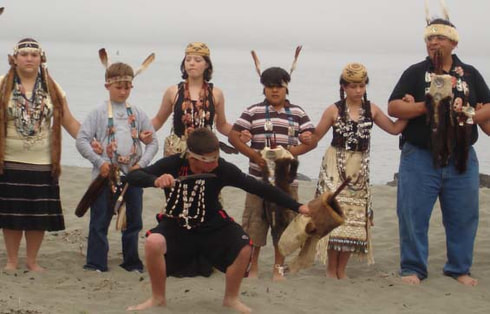 Photo from Wiyot Tribal Website Photo from Wiyot Tribal Website Let me start here. Just the other day I was on Facebook when I came across a post from the Wiyot Tribe where they tagged my friend Rachel Sundberg and thanked her for helping them learn more about cultural protocols, dance regalia and continuing ceremonial practices. The Wiyot children in the photos were happy and strong and in one photo a young girl was wearing a dress that I recognized, a dress that was worn by Wiyot tribal member Michelle Hernandez in 2014 when the Wiyot did their first women’s coming-of-age ceremony in over 100 years. I have to start here. I have to. Because most people would start on February 26, 1860 when Humboldt County citizens massacred more than 150 Wiyot people who had just finished their World Renewal Ceremony to pray for the health and well-being of the community and the world. Humboldt County citizens came with hatchets and knives - what one scholar, Tony Platt, refers to as “quiet weapons.” They murdered mostly Indian women and children. And that was the last time the Wiyot performed a World Renewal Ceremony on Tuluwat (what became known as “Indian Island”). I don’t want to start there. Because the Wiyot are so much more than the massacring of their people. They not only have survived, they have thrived and they continue to restore and revitalize. In 2014 they brought back their women’s coming-of-age ceremony and then they also revitalized their World Renewal Ceremony, on Tuluwat. The City of Eureka has been working with the Wiyot for the return of Indian Island for a few years now. The Wiyot Tribe purchased some of the island in 2000 which included an ancestral village. In 2000, after years of fundraising, the tribe purchased an acre and a half of the historic Tuluwat site from the City of Eureka, and six years later the city voluntarily returned an additional 60 acres to the tribe. https://lostcoastoutpost.com/2015/apr/4/eureka-consider-giving-rest-indian-island-back-wiy/ In 2015 the Eureka City Council voted to give the island back to the tribe - in toto. On Monday, local (businessman?) Rob Arkley went on the KINS Radio TalkShop to talk about his opinions on the return of Tuluwat to the Wiyot. They want to give away Indian Island to the In- to the Wiyots. Well I use Indian Island. I like it. My kids do. I see people there all the time when I’m over there. I don’t get how they can take one of our assets and give it. So I’m going to be offering over the appraised value for the property and if I get it, giving it away as surplus property, well that’s fine, but at the same time that’s an asset that’s gone from the public forever the Wiyots have made no commitment for us to use it and the city is giving it away! What is this city thinking of? I mean, it’s astonishing and flabbergasting to me. https://lostcoastoutpost.com/2017/jul/31/rob-arkley-wants-buy-indian-island-prevent-eureka/ A day later he (and his wife) tried to clarify what they meant when he said “What is this city thinking of?” etc. So they made a statement which went like this: Rob’s conversation on Talk Shop [yesterday] morning was completely misconstrued by Lost Coast Outpost in the article they posted [Monday]. We believe in this community and have proven it time and time again with our contributions over the years. Now we have offered to purchase Indian Island, but we do not want to own it. We would rather preserve it for the entire community. 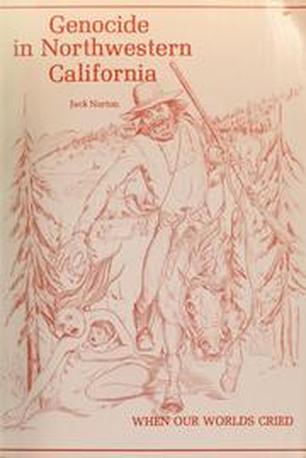 Or you can read this book... Or you can read this book... Look, we can go over and over the history of genocide in Humboldt County, the “deranged frontier” (as Jack Norton says), the indiscriminate murder of Native people that founded this place, details like “Indian hunting days” and killing babies by stomping on their heads or cutting out their hearts. We can talk about how Native peoples were called “savage” while murderers were called “settlers.” We can go over the statistics like the $1 million dollars paid for the hunting and killing of Indians in the State of California, with some prices set at $5 per head and 25 cents per scalp. Or even stories about people riding their horses down the center of town with Indian heads dragged behind them so they could trade them in for money. We can talk about the day that I was in the archive and came across a picture of Humboldt County “legend” Seth Kinman who is described as a “hunter and early settler of the Humboldt County region” when in fact he was murdering psycho-path who liked to pose in photos with Indian scalps. We could look at the Indian slave records in Humboldt County and talk about Native people who were sold into slavery in Old Town Eureka and how records show most of these were children. We can talk about the indiscriminate sexual assault of Native women and children that happened during this founding of Humboldt County, how there were reports of Indian women being assaulted as their families had to watch in horror, afraid that if they tried to fight back their daughters would be killed. We can call into question why the names of roads in our towns are the names of men who “settled” this place when settlement was not benign, it was depraved. We can reiterate that there are some settler families who benefited from this violence more than others; that Humboldt County wealthy landowners did not get their land legally, they stole it, taking over large areas were Native peoples were forced out often through massacres or enslavement. We can wonder why Fort Humboldt isn’t categorized as a “concentration camp” when they were laboring Indians to death, starving them and holding them against their will. We can open up our minds and hearts and realize that genocide -- it’s written on the landscape. I teach this history because it’s important. I’m always surprised how little students and other people really know about what happened in California. We have no public memorials to the Native people who fought, bled, died and survived this horrific period of time. In school, children learn about a benign mission system, a prosperous gold rush, and a “fair” rancho system. Native children grow up hearing about what their ancestors did to survive, because we want them to know - you are from a strong, enduring people. This water runs through you, this land has built you, and you will heal your community to heal the land, heal the land to heal your community. That’s right I said community. I have said it before - when Native people are talking about healing, preservation, protection, they aren’t just talking about building a better future for Indians, they are talking about building a better future for the earth. You live here right? Earth? When we talk about the balance, health and well-being that we pray for during our World Renewal Ceremonies we are talking about the balance, health, and well-being of everyone. We need to find tangible ways to address the issues that we ALL still carry with us from this depraved history. You know “learn from each other and benefit from our differing cultures for generations to come.” How do we do that in a way that matters? How do we benefit for generations? It’s pretty simple - return the land. Let the Wiyot decide how to move forward. You know why. Because it’s not “giving Indian Island away” it’s “returning” it, to the rightful owners. Let’s say that you have this beautiful house that your family has been in for generations. And one day your Dad sits you down and says: “Child, you are about to inherit our family house. FYI in order for us to gain ownership of the house, we came in the middle of the night and murdered everyone who lived here. And then it was ours. Oh, and also, the extended family and descendents of the survivors of our murder spree live just down the way. They sometimes come and say prayers outside the house.” What do you do? Live in the murder house? It’s not YOURS. At some point you have a guy (maybe his name rhymes with Cob Carkley) who comes over and goes "I understand that you are thinking about giving your house back to the family of the people your family murdered to get your house. How about I offer you double the price and you DON'T give it back because I also want to use your house and my kids like it." #SoundsLegit When I offer this example to my classes students have very clear reactions to this scenario. (1) don’t steal other people’s stuff. It’s wrong. (2) if you inherit or benefit from someone who stole other people’s stuff, and you know that, you should do what you can to rectify that situation. (3) the easiest way to rectify that situation is to give the darn things back. (4) it’s that simple. I’m trying to break it down into its simplest form but the truth is that Tuluwat is so much more than just “stolen stuff.” Oh it’s stolen, but it’s also not just about getting some “thing” back. Tuluwat is not being returned because the Wiyot “want” it, it is being returned because that is the right thing to do. For everyone. For the entire “community.”
We are a part of the community too, us Natives. Have been since the beginning of the time. Will be. Always. The water runs through our veins. The land builds us. We pray for the health and well being of all things, we sing, we dance, we heal the community to heal the land, we heal the land to heal the community. All of the community. Everything. Together. See every year in California Fourth Graders (and their wary parents) are forced build and/or do some kind of California Mission Project. This is a part of the California class curriculum. In third grade you learn about the "prosperous gold rush" and in the fourth grade you learn about the so-called majestic, well-built and "history changing" missions. You know, where the Catholics showed up and were all "hey Indians, we want to teach you to garden!" The Mission History in California is very sanitized. It erases the incredible amount of violence that it took to re-make this state into "California." The Spanish didn't just send friendly Padres they also sent scores of soldiers. Junipero Serra (the "founding father" of the mission system) wasn't just writing about how much he liked to teach Indians how to "garden" he was also writing things like: That the spiritual fathers should punish their sons, the Indians, by blows appears to be as old as the conquest of these kingdoms (July 7, 1780). In both of these quotes Junipero Serra was talking about how much he felt justified in committing violence against Indian people. The first quote Serra was all "hey the Spanish were mean to Indians during conquest so we can be too." And in the second quote "Hey, I'm sending you these Indian runaways, make sure you whip them sometimes and also lock them up in shackles. If you don't have any we can send some!" Sure does sound like "gardening" is pretty high on that list huh? (Enforced gardening or required gardening or "unfree" gardening is also slavery FYI... historians). The narrative of the Missions as peaceful places where Friars and Native people lived together is so ubiquitous that it becomes part of the California identity. Our mission projects must show how "important" missions are to the history of California. <--- This is the Michaels "Mission Kit" which you can go to the store and buy and then force your children to put together a mission with these cute little Indian figures and Padre figures. But you can't buy a cat-o-nine tails (a whipping instrument that had nine ropes coming off of it that they would sometimes tie little metal balls to the end of so they could beat Native American people with it) or shackles. And no kit comes complete with the dormitories where they used to force Indian women and children to sleep at night, locked up, without a bathroom and which visiting explorers would describe as having the "foulest stench." Here is an example of some Mission Project that I found online. Please note: I would never poke fun at these children who are obviously very sincere in their effort to complete this project. Instead, please pay attention to the types of information that they are asked to include in their mission project and the way they talk about the mission system. 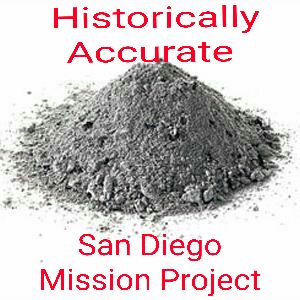 From Facebook (Ral Christman) From Facebook (Ral Christman) I knew my daughter would face the dreaded California Mission Project once she hit the 4th grade. And that was this year. The plan was to have her do the San Diego Mission. We'd planned for her to build it, and then set it on fire and then turn that in so that she could tell the story of the Kumeyaay Revolt. Unfortunately she was not able to actually set the thing on fire, so instead she put flames on the structure and wrote her report specifically about the revolt. Questions that my daughter had as part of her project were things like "how did the Spanish influence the structure of the Mission?" and "Why is the mission important to California history?" She, in particular, commented to me that her friends were mostly writing "positive" things about the mission, and she really couldn't understand why. In my talks I often have people point out to me that teaching the "real" history of the Spanish Missions couldn't happen in the 4th grade. Children, they say, would not be able to handle "real" facts about the mission system. And I usually counter with "do you know who mostly grows up knowing this history from the very beginning of their lives? Native children. So which children are you trying to protect? There is a way to show children a more nuanced history, a history that doesn't erase Native people or make them in to passive parts of the story. I have done it with my own daughter her whole life." But I thought what better way to show what a 4th grade project should look like when it talks about Native survivance and resilience and when it refuses to silence Native resistance then to share my daughter's report. I present for your reading pleasure Arya Barya's mission report. #RewriteAndRerightHistory San Diego Mission & Kumeyaay Revolt |
SubscribeClick to
AuthorCutcha Risling Baldy is an Associate Professor and Department Chair of Native American Studies at Humboldt State University. She received her PhD in Native American Studies from the University of California, Davis. She is also a writer, mother, volunteer Executive Director for the Native Women's Collective and is currently re-watching My Name is Earl... (5) Top PostsOn telling Native people to just "get over it" or why I teach about the Walking Dead in my Native Studies classes... *Spoiler Alert!*
Hokay -- In which I lead a presentation on what happens when you Google "Native American Women" and critically analyze the images or "Hupas be like dang where'd you get that dentalium cape girl? Showing off all your money! PS: Suck it Victorias Secret"
In which we establish that there was a genocide against Native Americans, yes there was, it was genocide, yes or this is why I teach Native Studies part 3 million
5 Reasons I Wear "Indian" Jewelry or Hupas...we been bling-blingin' since Year 1
Pope Francis decides to make Father Junipero Serra a saint or In Which I Tell Pope Francis he needs to take a Native Studies class like stat
I need to read more Native blogs!A few that I read...
Archives
June 2020
Categories
All
|
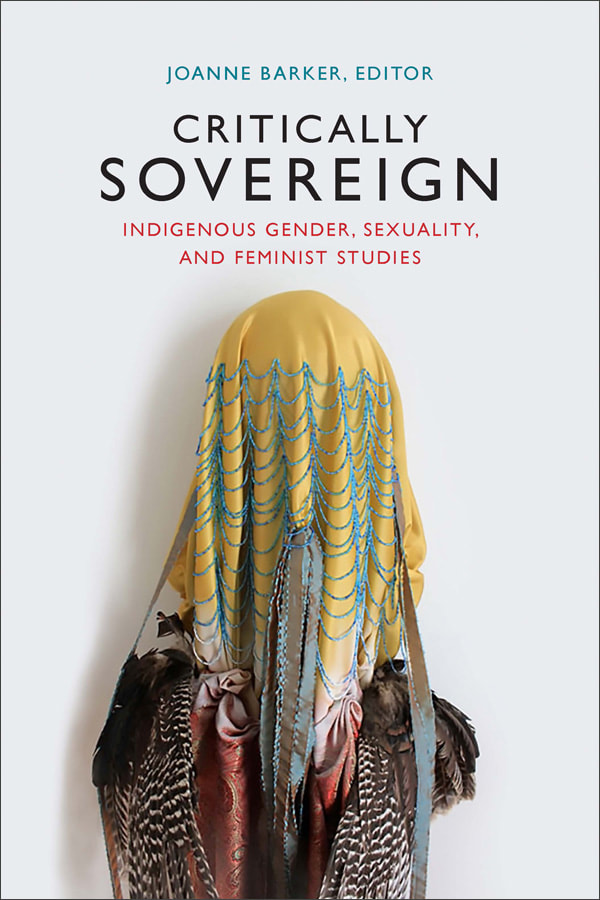
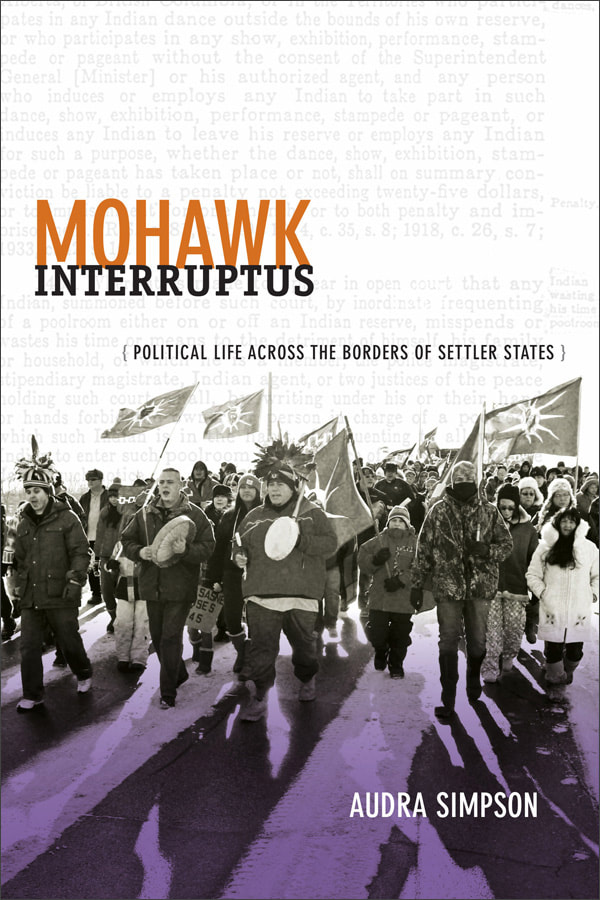
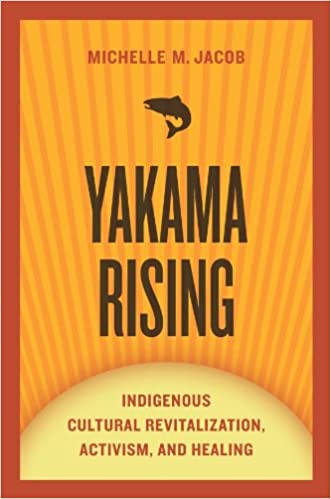
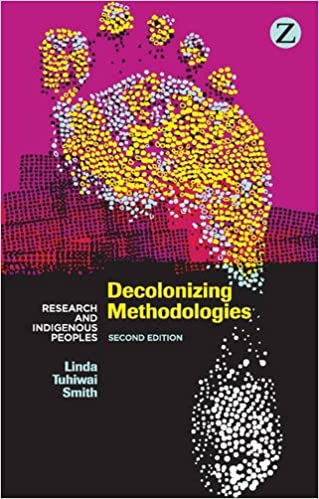
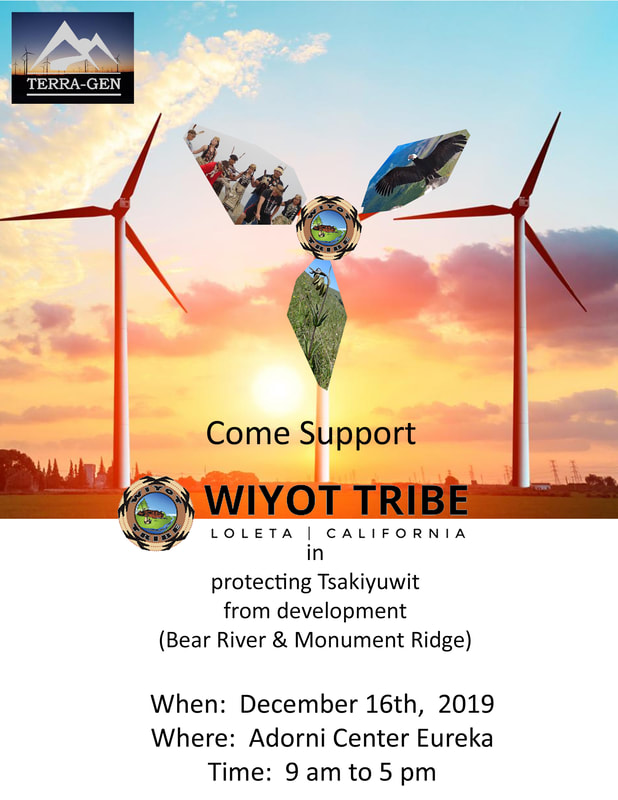

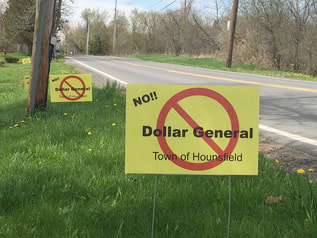
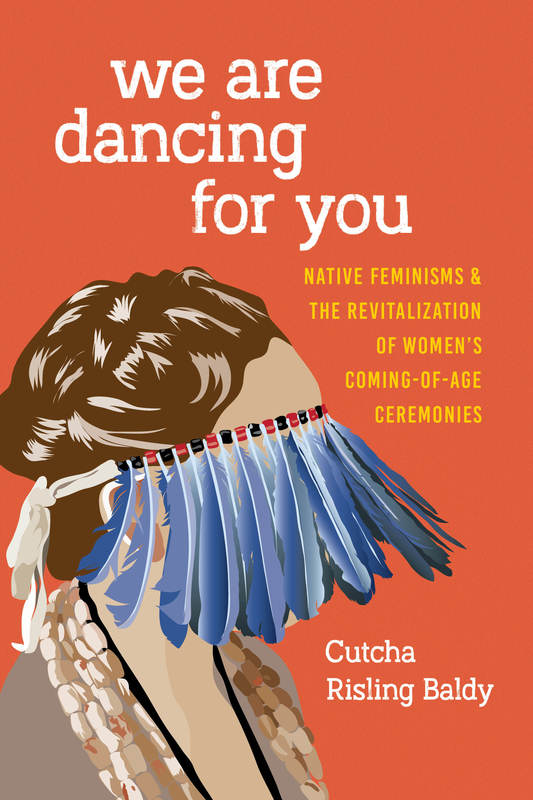
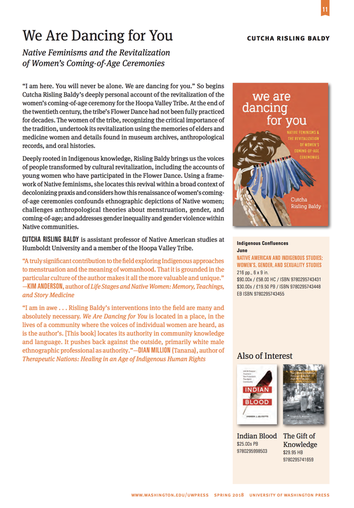
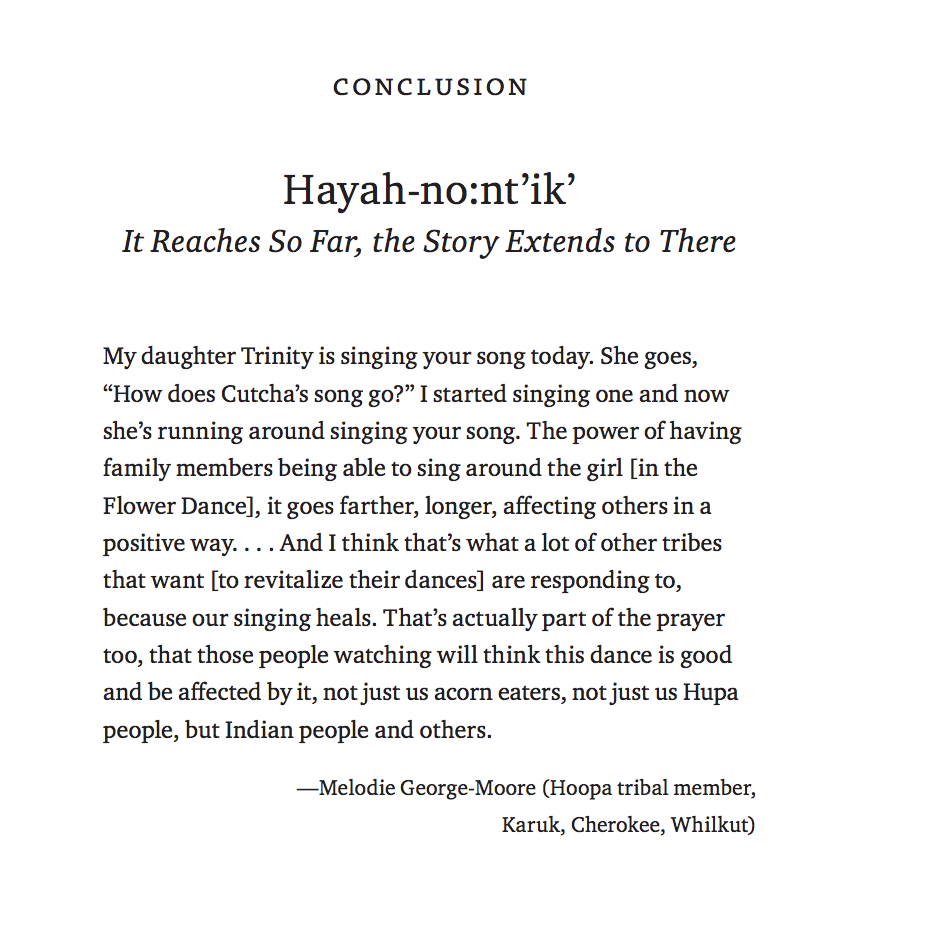


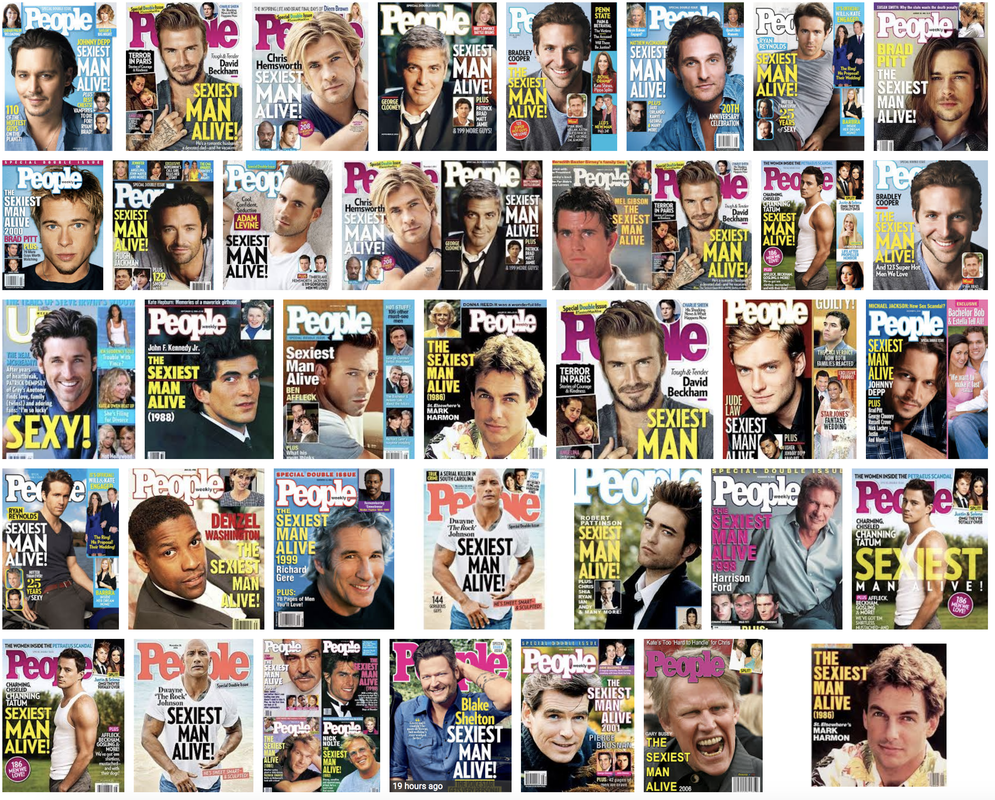
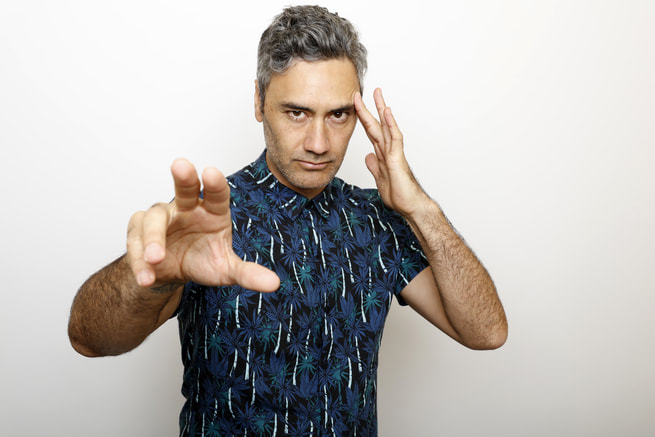
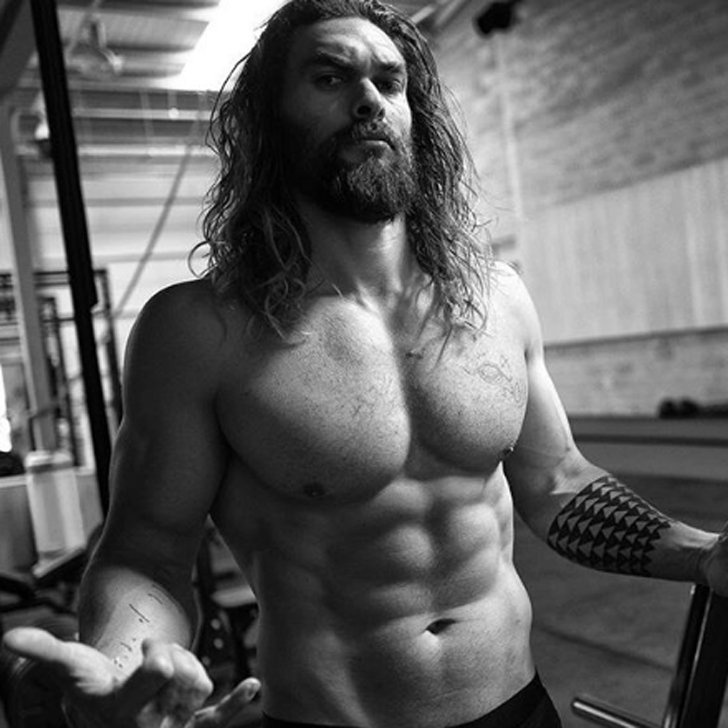
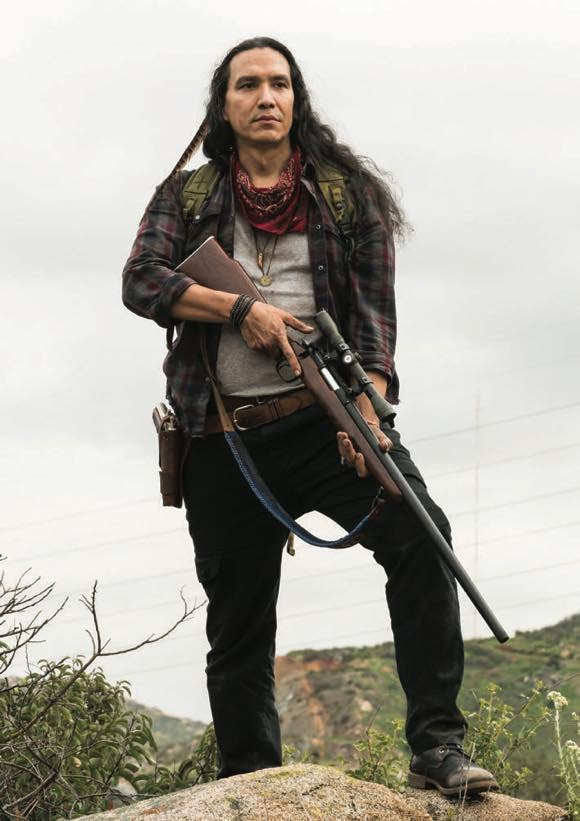
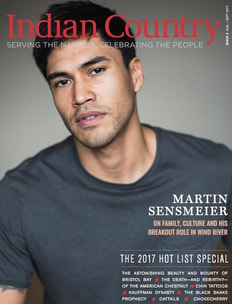
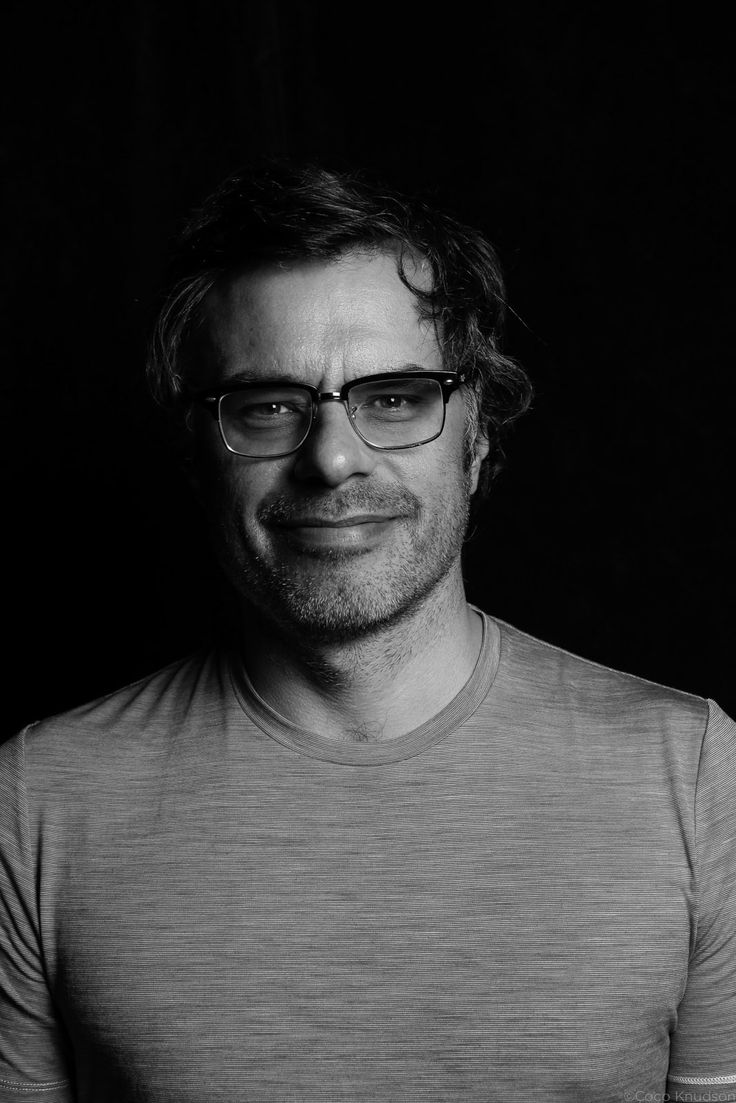
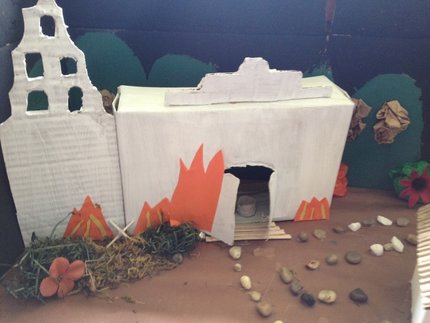

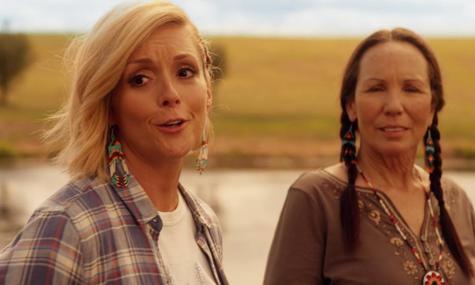
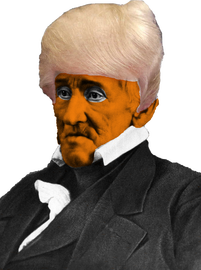
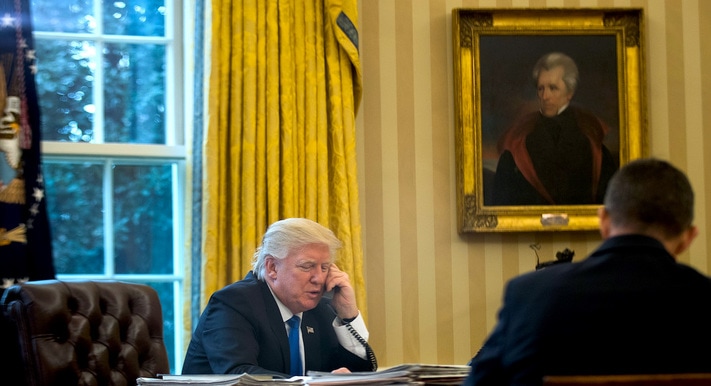
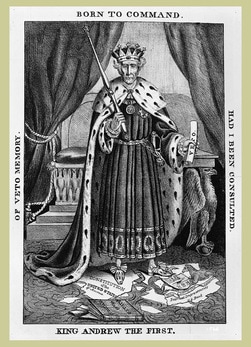
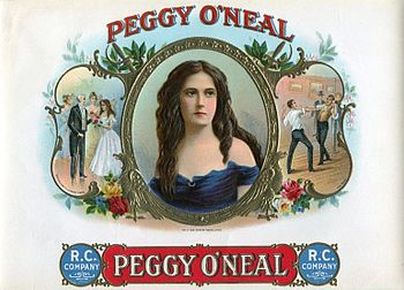
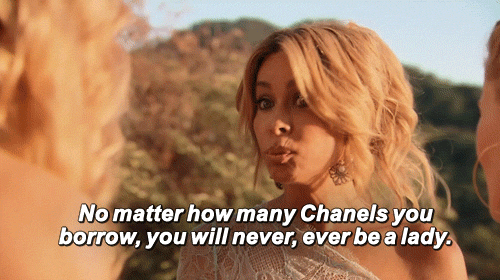

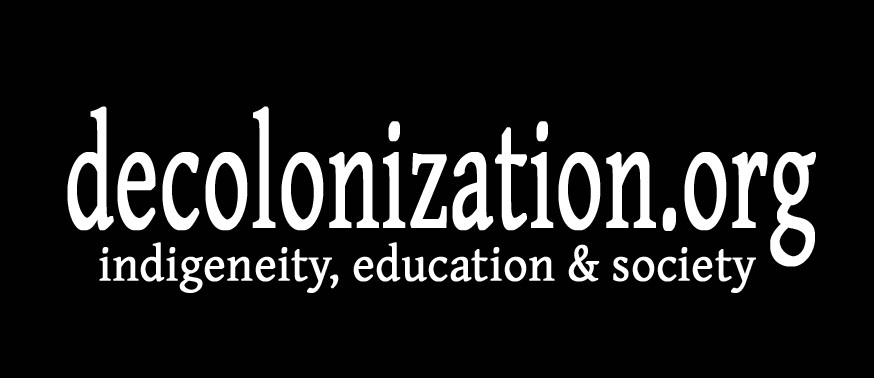


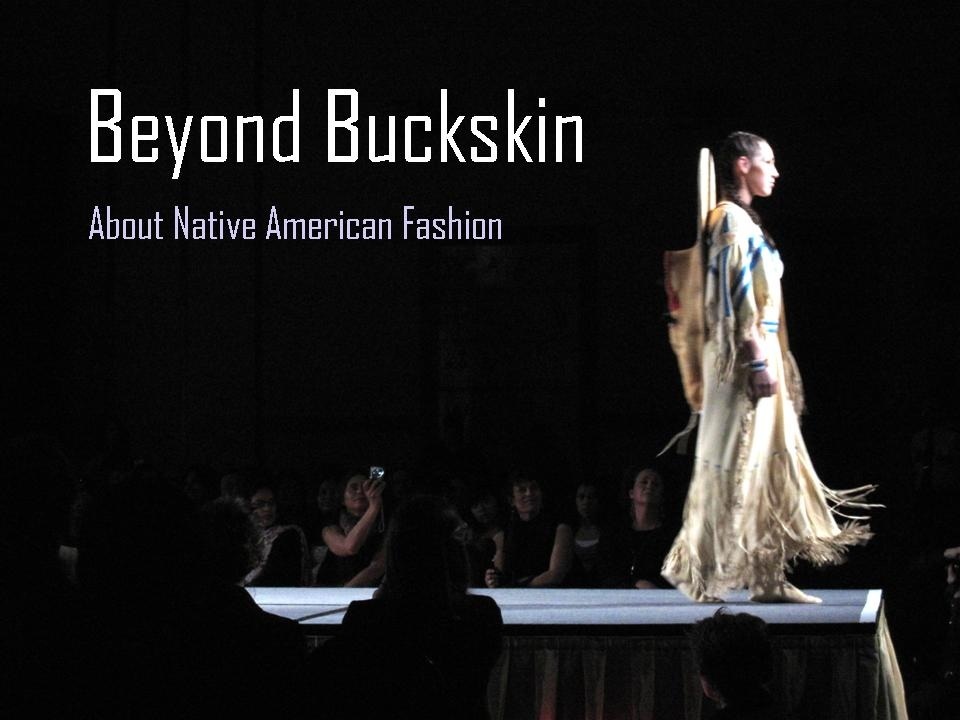

 RSS Feed
RSS Feed
